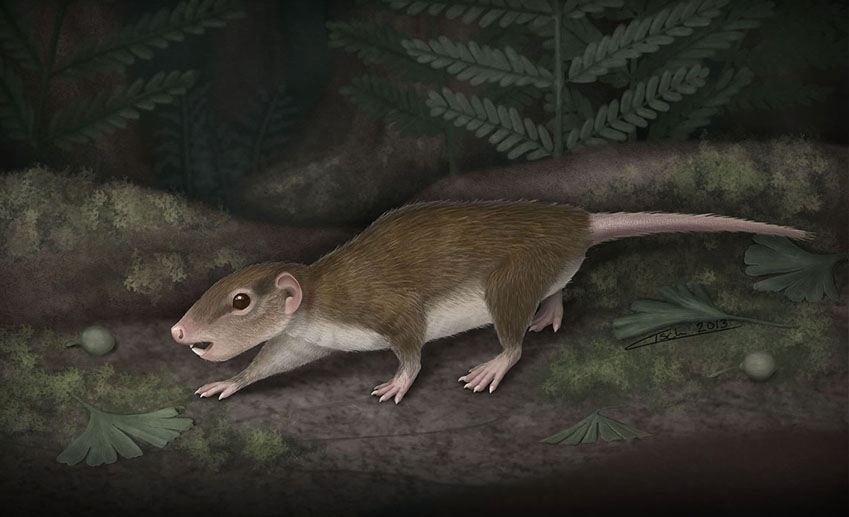For over 120 million years they flourished, occupying the undergrowth of the Jurassic, Cretaceous and Palaeogene forests. They first evolved when the dinosaurs were at the height of their power and, like the dinosaurs, soon created their own global empire. Multituberculate fossils have been found on every continent, although they are far more common in the Northern Hemisphere. At one point in Earth history, multituberculates made up over half the existing mammalian species at the time.
 |
| The 160 million year old fossil of the multituberculate Rugosodon eurasiaticus |
The oldest known multituberculate was known from a fragmentary skull and teeth, and while this is enough to identify a new species of mammal, it did not give any insight into the overall creature or how it adapted to its environment.
Yet a fossil discovery from China has not only pushed the history of the group by an incredible 10 million years, but has revealed the world of the early multituberculates.
Earlier this year, a team of palaeontologists led by Zhe-Xi Luo from the University of Chicago, uncovered the near complete remains of a 160 million year old multituberculate from the Tiaojishan Formation in China's fossil famous Liaoning Province. Analysis of its teeth (the teeth of mammals have shapes unique to a species and can be used to precisely identify what a creature is) showed that it was a new species. Named Rugosodon eurasiaticus, which refers to the rugosity or wrinkliness of the creature's teeth, it would have looked like a cross between a chipmunk and a mouse.
 |
| An artist's impression of Rugosodon eurasiaticus |
Rugosodon also had a flexible spine, giving the creature great capacity to both twist left and right and to bend back and forth at the waist. The shape and arrangement of the animal's teeth suggest, on the basis of comparisons with modern mammals, that Rugosodon consumed a mixture of fruits, seeds and animals, including worms, insects and even small vertebrates. The versatility of multituberculates, both in the physical sense and the dietary sense, made them evolutionary successful.
 |
| In the end, it was the evolution o grasses and sedges which led to the demise of the multituberculates |
Indeed the only reason why they went extinct was due to a massive and sudden shift in the palaeoenvironment. 35 million years ago during the Oligocene epoch, a new group of plants evolved, namely the grasses and sedges. A shift in climate meant that these newcomers spread like wildfire as the ancient, lush tropical forests began to retreat.
The environment which had sustained the multituberculates for 130 million years was changing. Unable to consume the tough, nutrient-poor, silica edged grasses (a problem encountered by many other herbivores at the time), their numbers shrank with their environment until they went extinct just 35 million years ago. Intriguingly, it was the rodents who replaced them, out-competing the multituberculates and diversifying until they became the new, dominant mammal group.